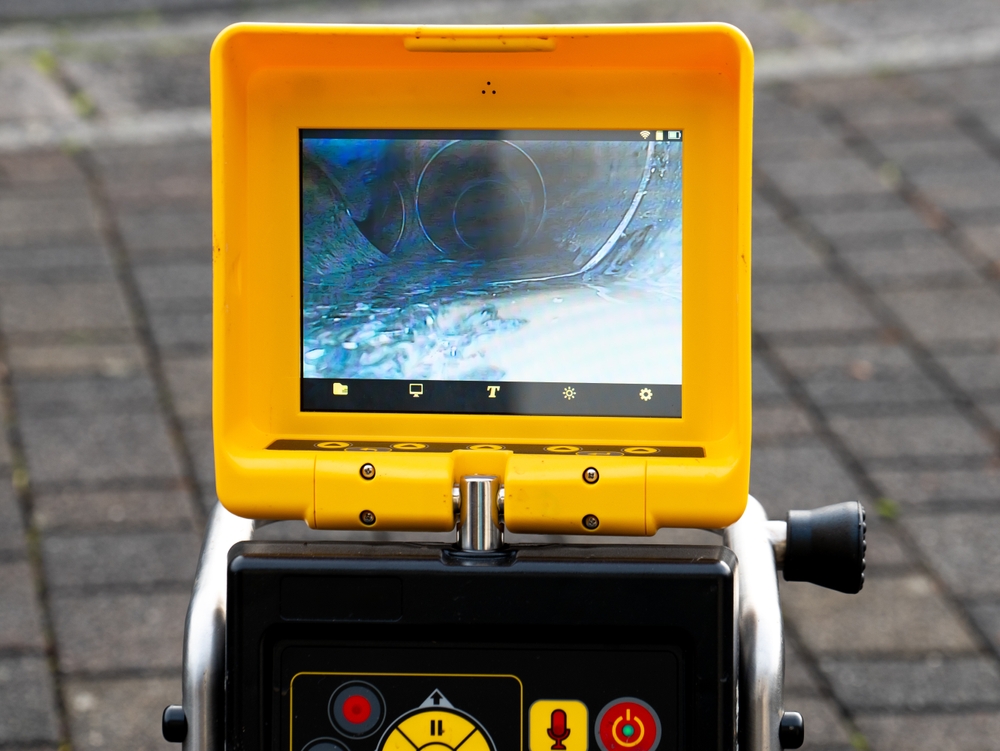
Have you noticed unpleasant odors around your property or dealt with frequent water backups? These are just a few signs that your sewer line might be compromised. But how do you get to the root of the problem without causing major disruption to your property? The answer is a sewer video inspection. This innovative technique allows plumbers to get a clear view of what’s happening inside your pipes without the need for extensive digging or guesswork.
What Is a Sewer Camera & What Can You Expect From the Inspection Process?
A sewer camera is a sophisticated piece of equipment designed to allow plumbers to inspect the condition of underground sewer pipes without excavation. The high-resolution video camera is attached to a flexible rod so that it can easily slide in and around the curves and dips of your plumbing lines. It is also equipped with bright LED lights to capture clear images even in the dark, damp environment of your sewer line.
During a sewer scope inspection, a trained technician from a reputable plumbing company will locate an access point to your sewer system. This could be through a cleanout, removed toilet, or even from the roof through a vent stack. The camera is then carefully inserted into the pipe and guided through the system. As it travels, it transmits live video to a monitor, giving the technician a comprehensive view of your sewer line’s condition.
The entire sewer inspection process is non-invasive and typically takes about an hour to complete, depending on the complexity of your plumbing system. Throughout the inspection, the technician will look for any signs of damage, blockages, or other potential issues. They may even share the footage with you so that you have a strong understanding of the condition of your pipes. Once the plumber has an idea of the location and extent of damage, they can get to work repairing the problem or providing the necessary drain cleaning or hydro jetting services.
Types of Problems a Sewer Video Inspection Can Uncover
A sewer camera inspection can reveal a wide range of issues that might be lurking in your pipes, including:
Tree Root Intrusion
As trees grow, their roots seek out water sources. Unfortunately, this means they are drawn to sewer lines. And, in some cases, they are able to find their way into tiny cracks or joints in your home’s piping. With time, the roots can expand, causing significant damage and blockages. A sewer scope inspection allows your local plumber to quickly get to the bottom of the issue.
Pipe Corrosion
Older pipes, especially those made of cast iron or clay, can deteriorate over time due to age and exposure to chemicals. The camera can detect signs of corrosion, such as pitting or scaling on the pipe walls, which could lead to leaks or collapses if left untreated.
Major Blockages
When multiple drains throughout your home are backed up, there’s likely a large clog somewhere in the sewer line. The blockage could be caused by a buildup of grease, hair, or even foreign objects that have found their way into the pipes. In some cases, a sewer camera might reveal structural issues like pipe bellies (low spots where water collects), cracks, or misaligned joints that are causing the wastewater to back up. No matter what the source of the problem is, you can trust our plumbing experts to provide an effective solution.
Sagging Pipes
Over time, the ground beneath your sewer line may shift or settle, causing sections of the pipe to sag. These low spots can lead to standing water and debris accumulation, which can result in frequent clogs and backups. A sewer camera can easily detect these areas of improper slope, allowing plumbers to address the issue before it leads to more severe problems.
Collapsed Pipes
In older plumbing systems, rotted and disintegrated pipes are a common concern. If the deterioration is left unaddressed, it can cause the pipes to eventually collapse, blocking the flow of wastewater and leading to serious backups. A timely inspection can pinpoint the exact location of the collapsed sections and guarantee accurate repairs.
What Happens After a Sewer Camera Inspection?
Once the sewer video inspection is complete, your plumber will review the findings with you. If issues are discovered, they will recommend the appropriate course of action. Depending on the severity and nature of the issue, this might involve traditional repair methods or a more modern approach like trenchless repairs.
Traditional vs. Trenchless Sewer Repairs
Traditional sewer line repairs involve digging a trench to access the damaged portion of the pipe. This method can be disruptive to your landscape and potentially costly, but it may be necessary for extensive damage or in situations where trenchless methods aren’t feasible.
In contrast, trenchless repairs can often be completed through small access points rather than long trenches. These methods are becoming increasingly popular due to their less invasive nature. Pipe lining and pipe bursting typically cause less disruption to your property, can be completed more quickly, and are often more cost-effective in the long run.
Your plumbing professional will help you weigh the pros and cons of each method based on your specific situation, ensuring you make an informed decision that protects your property and budget.
Trust Cool Willy’s to Help You Stay on Top of Plumbing Maintenance
Many homeowners choose to schedule periodic inspections, especially if they have older pipes or have experienced plumbing issues in the past because regular sewer line inspections can help catch potential issues early and prevent the need for emergency plumbing services. If you want to ensure your sewer system is in good shape, don’t hesitate to reach out to Cool Willy’s Air & Plumbing.
Our experienced technicians are equipped with state-of-the-art sewer cameras and the expertise to interpret the results accurately. Trust us to maintain a healthy, efficient system. Contact our team today to schedule a sewer line inspection and gain peace of mind about your home’s plumbing.
